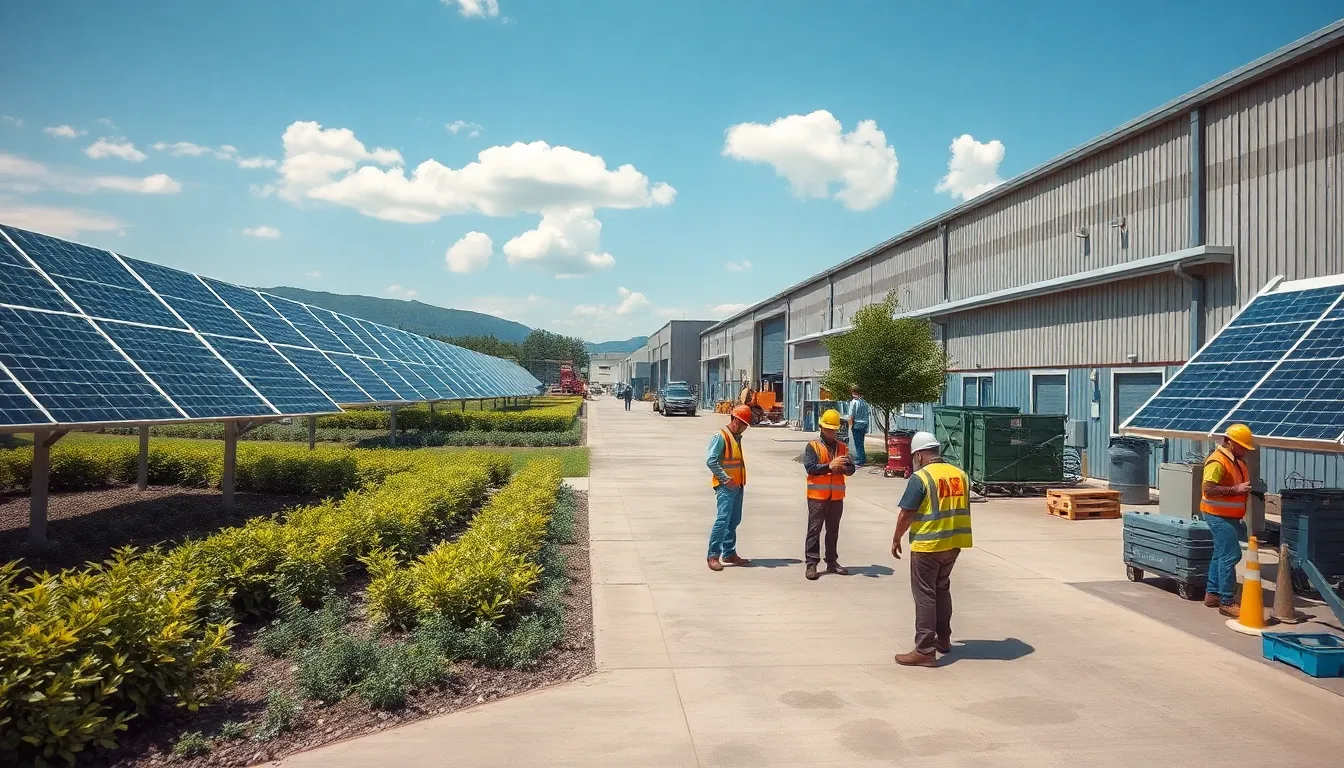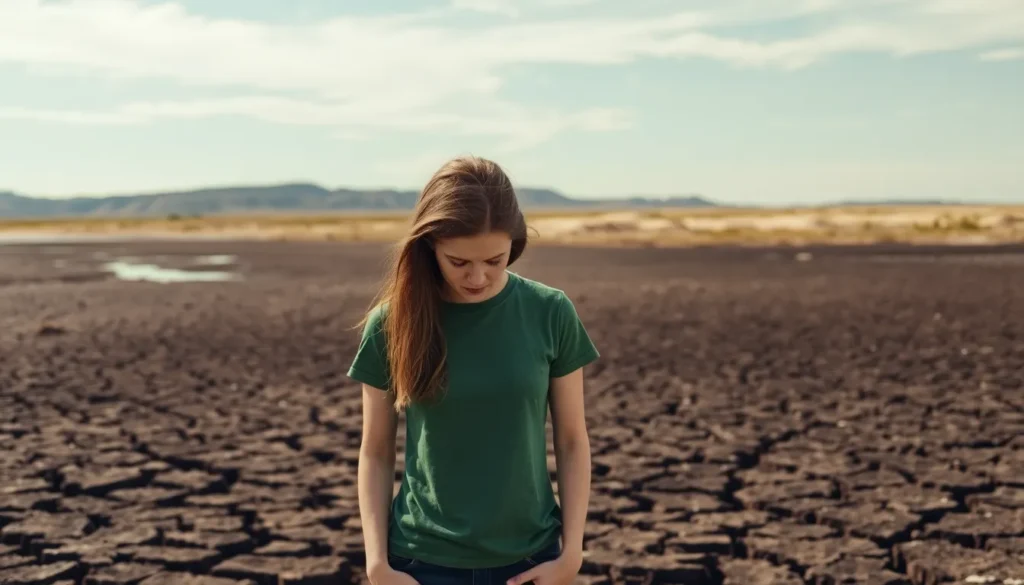Table of Contents
ToggleClimate change isn’t just a buzzword tossed around at eco-friendly coffee shops; it’s the reality knocking on our door—dressed as a hurricane and carrying a side of drought. While some might think it’s just Earth’s way of throwing a tantrum, the truth is it affects everything from our morning coffee to the polar bear’s afternoon swim.
Overview Of Climate Change
Climate change signifies long-term alterations in temperature and weather patterns. Scientists attribute these changes primarily to human activities, particularly the burning of fossil fuels, deforestation, and industrial processes. Rising levels of greenhouse gases, such as carbon dioxide and methane, trap heat in the atmosphere, leading to a phenomenon known as global warming.
Global temperatures increased by approximately 1.2 degrees Celsius since the late 19th century. This rise contributes to various environmental changes, including melting ice caps, elevated sea levels, and shifts in ecosystems. As polar regions warm, wildlife such as polar bears face dwindling habitats.
Altered weather patterns present drastic effects with intense hurricanes, prolonged droughts, and unexpected snowfall. Crop yields fluctuate dramatically, threatening food security for millions. Additionally, human health suffers due to increased temperatures fostering the spread of disease.
Oceans absorb much of the excess heat, resulting in coral bleaching and marine biodiversity loss. Climate events disrupt economies, impacting agriculture, tourism, and infrastructure. Politically, governments confront challenges responding effectively to climate-related threats, often requiring global collaboration for comprehensive solutions.
Societies increasingly perceive the urgency of climate change as evidence mounts. Awareness campaigns and grassroots movements emerge, advocating for renewable energy sources like solar and wind power. Transitioning to sustainable practices becomes paramount in mitigating further impact.
Causes Of Climate Change

Climate change stems from various natural and human-induced factors. Understanding these causes clarifies the urgency of addressing this global challenge.
Natural Causes
Natural factors contribute to climate change through processes that occur over long timescales. Changes in solar radiation impact climate patterns, affecting the Earth’s temperature. Volcanic eruptions inject large amounts of ash and gases into the atmosphere, leading to temporary cooling periods. Ocean currents also play a crucial role in regulating climate by redistributing heat across the planet. Additionally, Earth’s natural greenhouse effect traps heat, essential for maintaining temperatures suitable for life. However, these natural causes occur over milennia, contrasting starkly with the rapid changes driven by human activities.
Human-Induced Causes
Human activities significantly accelerate climate change. Burning fossil fuels for energy releases carbon dioxide and methane into the atmosphere, enhancing the greenhouse effect. Deforestation also contributes, as trees absorb carbon dioxide; their removal leads to increased concentrations in the atmosphere. Agriculture produces greenhouse gases through livestock methane emissions and rice cultivation. Industrial processes release toxic emissions, further intensifying atmospheric changes. Urbanization amplifies these effects, as sprawling cities generate heat and energy demands. The combined impact of these human-induced activities drives unprecedented alterations in environmental conditions.
Effects Of Climate Change
Climate change manifests in various detrimental ways that impact the planet and society at large. The following sections examine the environmental and economic consequences of this pressing issue.
Environmental Impact
Extreme weather events, including hurricanes and floods, have intensified due to climate change. Rising global temperatures contribute to the melting of ice caps, leading to increased sea levels. Wildlife faces significant threats as habitats change; for example, polar bears struggle to find suitable ice for hunting due to reduced Arctic coverage. Additionally, biodiversity suffers, with species extinction rates climbing as ecosystems shift. Freshwater resources become less reliable owing to altered precipitation patterns, causing droughts in some regions and floods in others. Climate change disrupts the delicate balance of ecosystems, ultimately pushing many species to the brink.
Economic Consequences
Agricultural sectors experience increased volatility as weather patterns shift. Crop yields fluctuate, with droughts and excessive rain impacting food production. Economic stability depends on consistent agricultural output, yet climate change creates uncertainty in food supply chains. Tourism industries also struggle; extreme weather can deter tourists from visiting affected areas. Infrastructure costs rise due to increased damage from storms and flooding, causing additional economic strain on governments and communities. Energy demands shift with rising temperatures, leading to higher costs for cooling systems. Proactive measures become essential to protect economies from these escalating climate effects.
Mitigation Strategies
Mitigation strategies focus on reducing the effects of climate change through various approaches. These solutions aim to curb greenhouse gas emissions and enhance resilience against climate impacts.
Renewable Energy Solutions
Renewable energy sources play a crucial role in addressing climate change. Solar power, wind energy, and hydroelectricity generate electricity without releasing harmful emissions. Deploying these technologies can significantly lower dependency on fossil fuels. For example, transitioning to renewable energy could cut global CO2 emissions by approximately 70% by 2050. Investing in energy efficiency measures further complements renewable strategies, leading to reduced energy consumption in homes and businesses. Exploring innovative energy storage solutions enhances reliability, making renewable sources more practical for widespread use.
Policy and Legislation
Policy and legislation are vital in shaping climate action. Governments create regulations that promote renewable energy adoption and enforce emission reduction targets. Implementing carbon pricing mechanisms encourages businesses to minimize their carbon footprints. Success in these initiatives can be seen in countries achieving their climate goals through strong regulatory frameworks. International agreements like the Paris Accord exemplify global cooperation in combatting climate change. Establishing stricter vehicle emission standards and promoting green building practices contribute to long-term sustainability. Effective legislation supports funding for research and development in climate technologies, driving innovation.
Addressing climate change is no longer optional; it’s essential for the survival of ecosystems and human societies alike. The challenges posed by rising temperatures and extreme weather demand immediate action and collaboration across all sectors. Transitioning to renewable energy sources and implementing robust policies are critical steps toward a sustainable future.
Grassroots movements play a vital role in advocating for change, reminding everyone that individual actions can contribute to a larger impact. As awareness continues to grow, the urgency to act becomes clearer. Every effort counts in the fight against climate change, shaping a healthier planet for generations to come.







